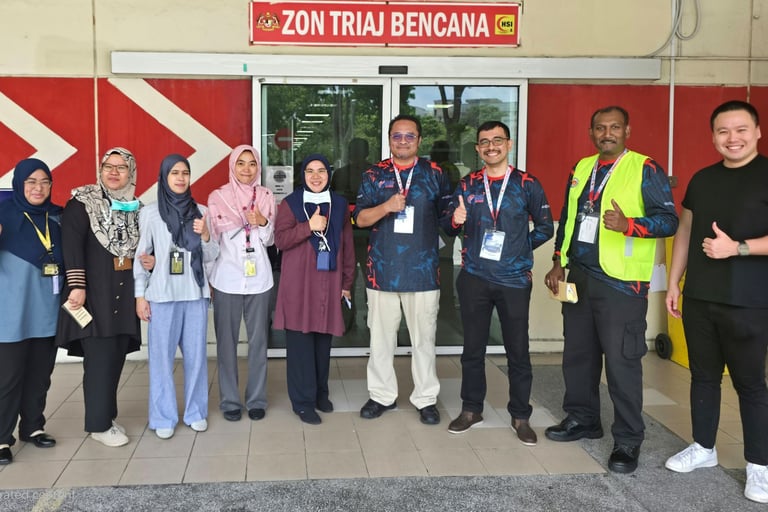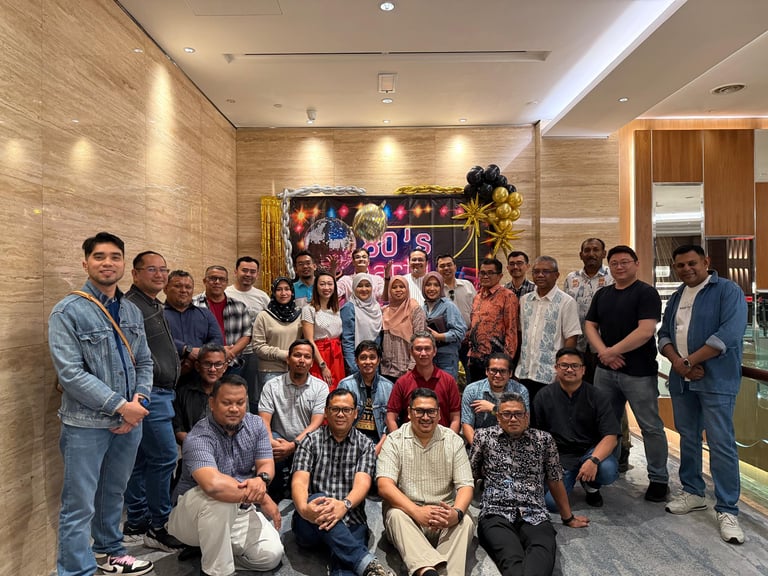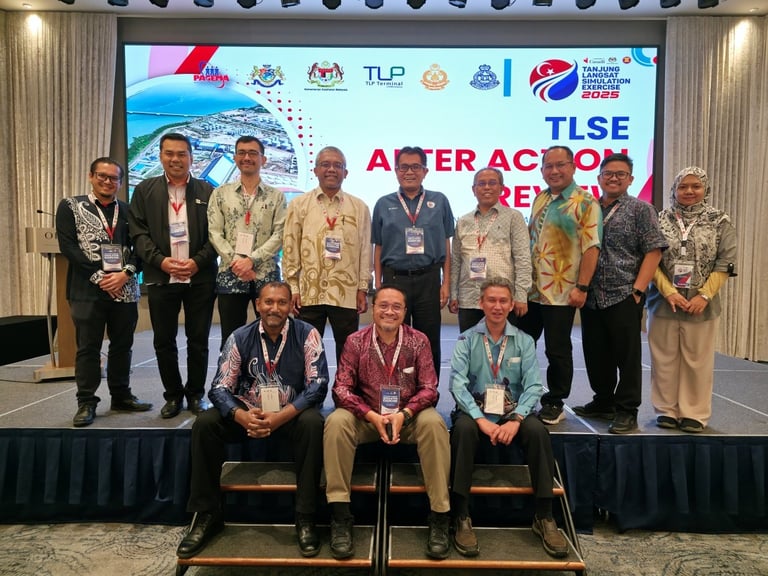TLSE 2025: STRENGTHENING MALAYSIA’S FRONTLINE AGAINST CHEMICAL EMERGENCIES
The industrial heartbeat of southern Malaysia pulsed with urgency and precision as the Tanjung Langsat Simulation Exercise (TLSE) 2025 unfolded over three intense days. Spearheaded by the Ministry of Health Malaysia (MOH), in its role as the lead agency for the ASEAN Emergency Operations Centre (EOC) Network, and in collaboration with Johor State Health Department (JKN Johor), this full-scale field simulation was more than just a drill—it was a declaration of readiness.
TLSE 2025: Strengthening Malaysia’s Frontline Against Chemical Emergencies
Johor Bahru, 15–17 July 2025 — The industrial heartbeat of southern Malaysia pulsed with urgency and precision as the Tanjung Langsat Simulation Exercise (TLSE) 2025 unfolded over three intense days. Spearheaded by the Ministry of Health Malaysia (MOH), in its role as the lead agency for the ASEAN Emergency Operations Centre (EOC) Network, and in collaboration with Johor State Health Department (JKN Johor), this full-scale field simulation was more than just a drill—it was a declaration of readiness.
In an era where industrial growth brings both opportunity and risk, TLSE 2025 focused on one of the most complex threats to public health: CBRNe incidents—Chemical, Biological, Radiological, Nuclear, and Explosives. These scenarios demand swift, coordinated, and technically sound responses. TLSE 2025 was designed to test just that.
From simulated chemical spills to high-stakes decontamination zones, the exercise challenged participants to respond as if lives depended on it—because in real emergencies, they do.
Objectives That Go Beyond Protocol
The simulation wasn’t just about reacting—it was about refining. TLSE 2025 aimed to:
• Evaluate the readiness of health personnel and agencies across multiple zones
• Test on-site response capabilities, including triage and containment
• Strengthen risk management and communication strategies
• Assess the effectiveness of PPE usage and decontamination procedures
• Review data control systems and inter-agency coordination at every level
Seamless Teamwork Across Critical Units
One of the most impressive aspects of TLSE 2025 was the exceptional collaboration between key response units. The Emergency and Trauma teams worked hand-in-hand with the Crisis Preparedness and Response Centre (CPRC), Public Health Office, and various interagency partners to ensure a unified and efficient response.
• Emergency and Trauma teams led rapid triage and stabilization efforts, demonstrating clinical precision under pressure
• CPRC provided strategic oversight, ensuring real-time coordination and resource mobilization
• Public Health Office managed surveillance, risk communication, and community safety protocols
• Interagency partners including fire and rescue, police, environmental agencies, and local authorities synchronized their roles to maintain operational flow and safety
This synergy was not just operational—it was inspirational. It showcased how Malaysia’s health and safety ecosystem can rise to any challenge when united by purpose and trust.
The Malaysian Medical Emergency Response Team (MyMERT) played a critical role throughout the exercise, with team members strategically deployed across:
• Incident Command Centre (ICC): Coordinating command, control, and communication efforts
• Onsite Operations: Engaging in triage, decontamination, and field medical response
• Hospital Zones: Managing surge capacity, emergency treatment, and continuity of care
Their performance underscored the importance of having a highly trained, mobile medical force ready to respond to disasters—natural or man-made.
A Commitment to Public Safety
MOH’s unwavering commitment to national preparedness was evident throughout TLSE 2025. By investing in rigorous simulations like this, Malaysia continues to position itself as a regional leader in public health emergency response.
As industries evolve and risks become more complex, exercises like TLSE ensure that our systems, people, and protocols evolve too—always one step ahead of the crisis.





